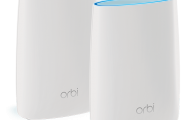Article
CSIRO app to help older people live at home safely | Aged And Community Services Australia
My Comments
Increasingly, the home network is becoming a key feature to support the “ageing at home” concept where an older person can live in their home yet is monitored for signs of ill-health or is assisted as they complete regular tasks using the technology supported by these networks.
One of the main goals is to support the concept of deinstitutionalisation in aged care and allied health care, which is becoming more relevant as we see an increasingly-ageing population accelerated by the baby boomers reaching the old age. This concept also reduces the need to build many aged-care facilities which also reduces the costs associated with building them.
There have been efforts in the UK to provide for dignified independent living for older people including the use of projected text to remind Alzheimer’s patients of stages in a cooking procedure and a GPS system to help with shopping. Similarly, IRIS who is a company in the US is distributing through an American chain of hardware stores products and services that also are about keeping tabs on one’s elderly relatives. This is being augmented by Fujitsu refining technology that makes a digital-camera image sensor measure one’s pulse which comes in handy with in-home aged care.
In the latest effort, the CSIRO have established a system to help with this concept. This is based around a mobile-platform tablet that works along with a system of sensors to observe the health and well-being of the senior citizen.
Energy sensors aren’t just to “be green” in this case, but to monitor use of appliances as part of a healthy daily lifestyle. For example, knowing if they have used the kettle to make a cup of coffee or tea at all or the use of a “cooking device” such as the stove, the microwave oven or toaster oven indicates if the person is well and looking after themselves. Similarly, knowing if they have left the oven or stove hob on for too long can indicate a dangerous situation.
Similarly, those motion detectors that are part of a security system can also identify whether the person has entered particular rooms like the kitchen as part of their regular activities. These work alongside various health sensors like blood glucose monitors or pulse monitors to observe the health of the older person.
This information is presented on a mobile-platform tablet to allow the person to see how they are keeping with life and a carer or the person’s loved ones can know what is going on if there are abnormalities. There are options in this system to help with assuring data privacy so that people only have access to this data only if they need it as part of the health-care plan for the elderly person.
Some other devices can work as part of this same equation such as the new breed of residential “smart locks” that effectively work as a business-grade access-control system for our homes. Here, they could be able to identify whether the door was locked or not and, preferably, identify whether it was locked or unlocked from inside or outside. This could, for example identify whether they got up and went outside to get the paper or mail for example thus knowing if they are well.
There can be questions raised about the use of technology as part of “ageing at home” in the context of over-monitoring the elderly population or stripping out the personal aspect of the care that is to be provided to this population. What needs to happen is that relatives and friends, along with professional carers need to engage with the older person for their health and welfare and not just have these systems monitor them for abnormalities.


